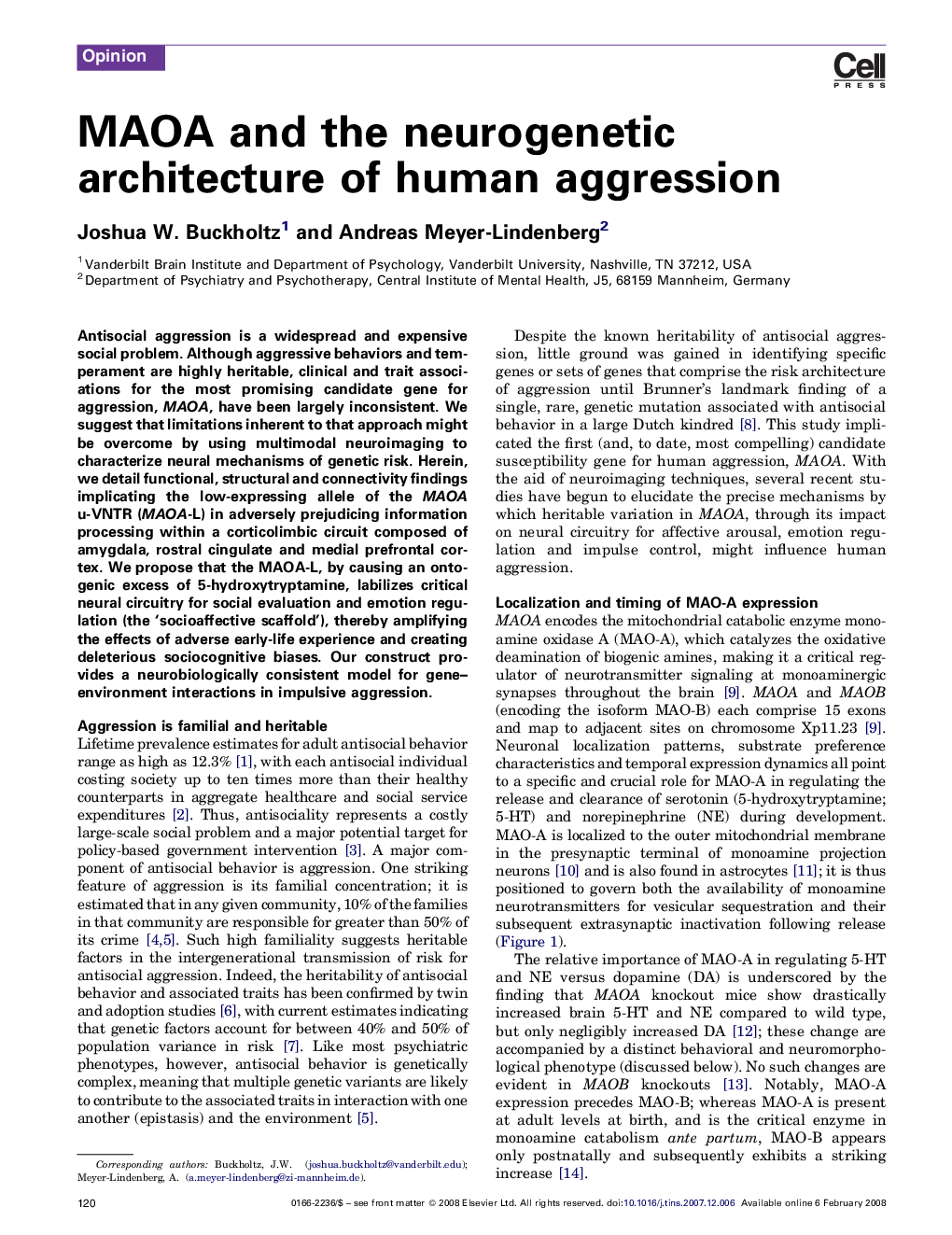| Article ID | Journal | Published Year | Pages | File Type |
|---|---|---|---|---|
| 4354676 | Trends in Neurosciences | 2008 | 10 Pages |
Antisocial aggression is a widespread and expensive social problem. Although aggressive behaviors and temperament are highly heritable, clinical and trait associations for the most promising candidate gene for aggression, MAOA, have been largely inconsistent. We suggest that limitations inherent to that approach might be overcome by using multimodal neuroimaging to characterize neural mechanisms of genetic risk. Herein, we detail functional, structural and connectivity findings implicating the low-expressing allele of the MAOA u-VNTR (MAOA-L) in adversely prejudicing information processing within a corticolimbic circuit composed of amygdala, rostral cingulate and medial prefrontal cortex. We propose that the MAOA-L, by causing an ontogenic excess of 5-hydroxytryptamine, labilizes critical neural circuitry for social evaluation and emotion regulation (the ‘socioaffective scaffold’), thereby amplifying the effects of adverse early-life experience and creating deleterious sociocognitive biases. Our construct provides a neurobiologically consistent model for gene–environment interactions in impulsive aggression.
